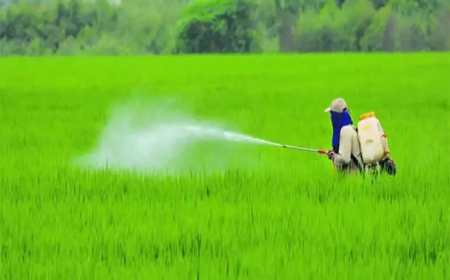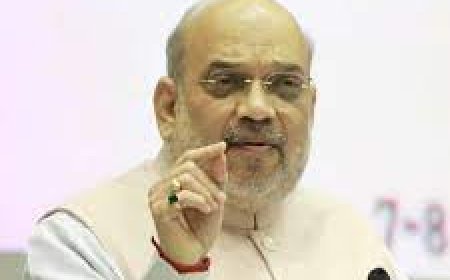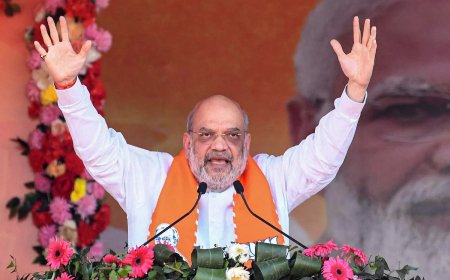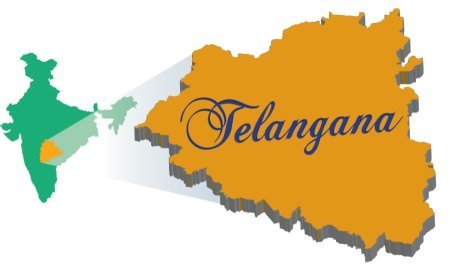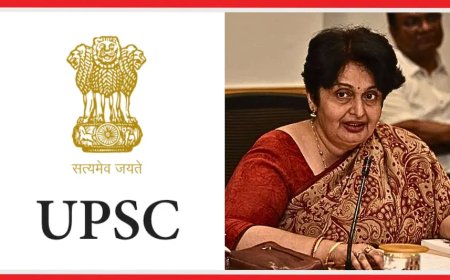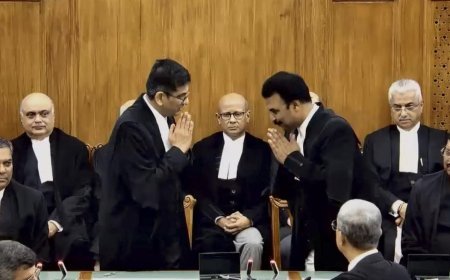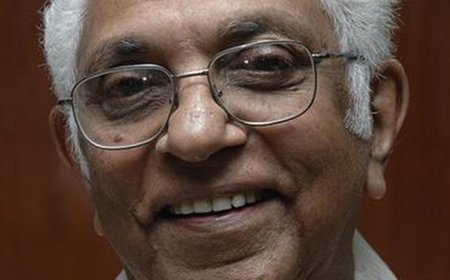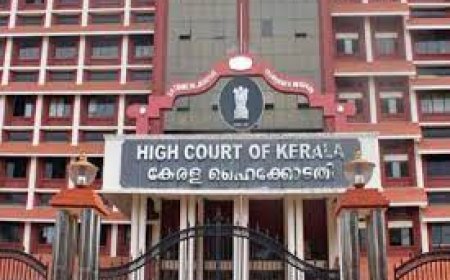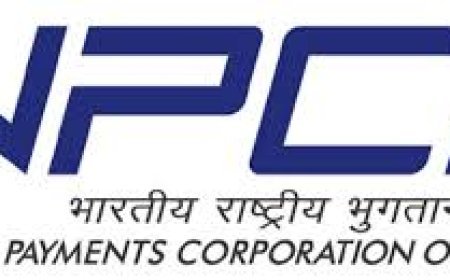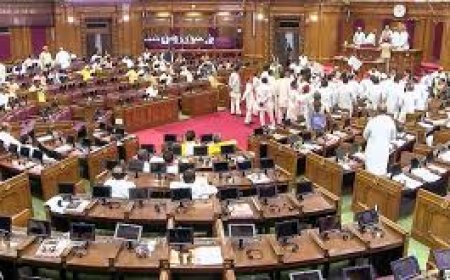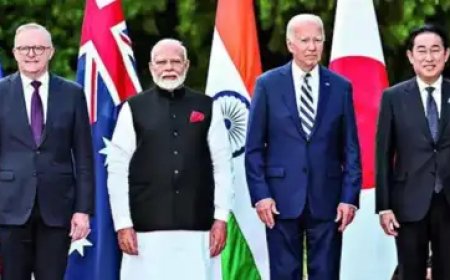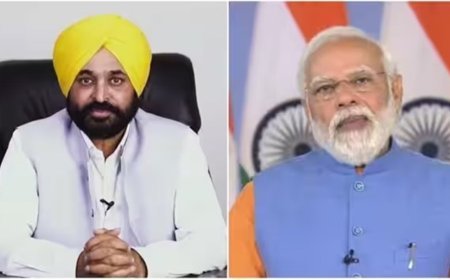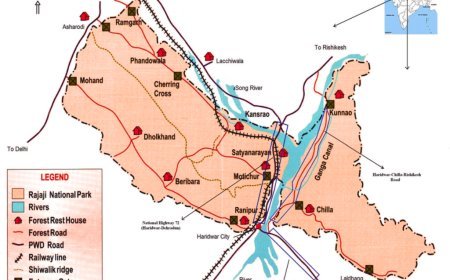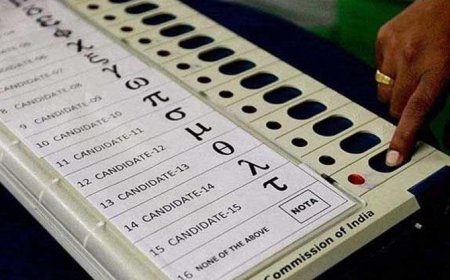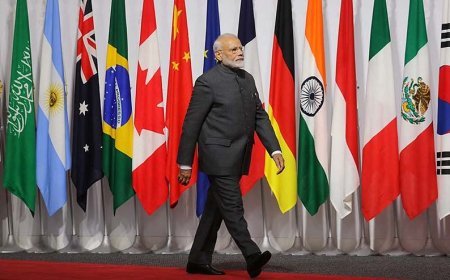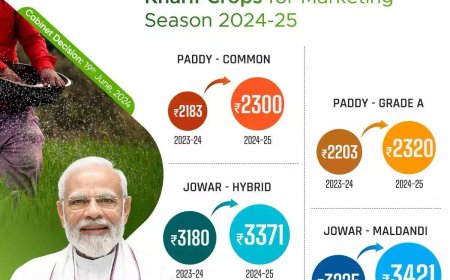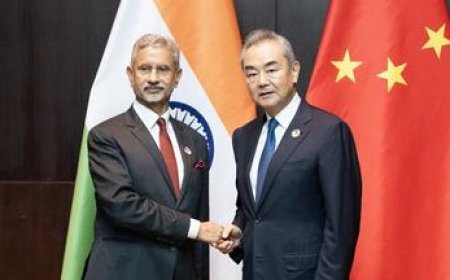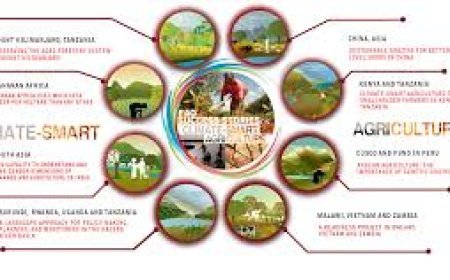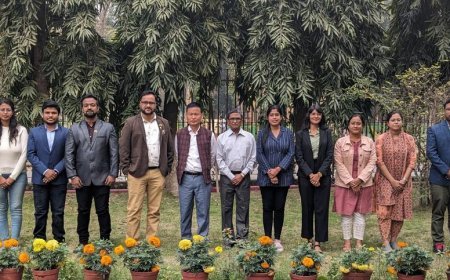June 2024: A Roundup of Economy News

Internationalisation of Indian Rupee
- RBI Initiatives: The RBI's annual report for 2023-2024 advocates a strategic plan towards the internationalisation of the rupee for the financial year 2024-25. The RBI appointed an Inter-Departmental Group (IDG) headed by Executive Director Radha Shyam Ratho to frame a roadmap for this initiative.
- Key Measures: The RBI aims to set up a financial sector cloud infrastructure to safeguard against payment frauds and integrate local messaging systems with global financial messaging systems. Steps were taken in December 2023 via the issuance of the Foreign Exchange Management (Manner of Receipt and Payment) Regulations, 2023.
- Special Accounts: Special Non-Resident Rupee (SNRR) accounts and Special Rupee Vostro (SVR) accounts facilitate international trade in INR, promoting the use of the rupee for cross-border transactions
India’s Trade Deficit
- Current Account Balance: India's current account deficit improved to 0.7% of GDP, or $23.2 billion in FY24, down from 2% of GDP, or $67 billion the previous year. This improvement is attributed to a decrease in the merchandise trade deficit.
- Trade Deficit Trends: India recorded a total trade deficit of $238.3 billion in 2023-24, down from $264.9 billion in the previous year. Despite stagnant export figures at an estimated $776.68 billion, the trade deficit narrowed.
- Major Partners: China emerged as India's largest trading partner in 2023-24, with a total trade volume of $118.4 billion and a significant trade deficit of $85 billion for India. India maintains a trade surplus with the US, UK, and other countries
Global Economic Prospects Report
- Weak Economic Performance: The World Bank’s 'Global Economic Prospects Report 2024' warned of the weakest global economic performance in 30 years by the end of 2024, projecting global GDP growth to slow to 2.4%.
- Investment Needs: Developing countries need a $2.4 trillion annual investment to address climate change and achieve global development goals by 2030.
- India’s Growth: India is forecasted to remain the fastest-growing major economy, with a projected GDP growth rate of 6.6% for FY25, driven by robust industrial and services sectors
Priority Sector Lending in India
- RBI Guidelines: The RBI mandates banks to allocate a certain percentage of their Adjusted Net Bank Credit (ANBC) to priority sectors. Regional Rural Banks (RRBs) and Small Finance Banks are required to allocate 75% of their total loans as PSL.
- Challenges: Banks face challenges in meeting PSL targets, especially during economic downturns or when specific sectors face credit quality issues. PSL loans often yield lower returns and carry higher credit risk due to factors like inadequate collateral and vulnerability to external shocks
Open Network for Digital Commerce (ONDC)
- Objective: ONDC aims to create an inclusive e-commerce environment by fostering competition, transparency, and accessibility through unified digital infrastructure and interoperability.
- Regulatory Framework: The ONDC adheres to the Information Technology Act 2000 and aims to reduce the domination of the e-commerce market by a few large platforms
Coal Production in India
- Production Increase: India produced 997 million tonnes of coal in 2023-24, an 11% increase over the previous year, with most of the production by State-owned Coal India Ltd.
- Global Standing: India is the second-largest producer of coal in the world, with total coal reserves of 344.02 billion tonnes as of December 2023
Recalcitrant Jumbo
- Introduction:
- The Reserve Bank of India (RBI) Monetary Policy Committee (MPC) has kept the benchmark repo rate unchanged at 6.50% for the eighth consecutive meeting due to concerns about elevated food inflation disrupting price stability efforts.
- Inflation Concerns:
- Governor Shaktikanta Das highlighted risks from stubborn food price gains impacting the overall disinflation path.
- Food inflation, measured by the Consumer Food Price Index, accelerated to 8.7% in April from 8.52% in March.
- Indicators like Crisil’s food plate costs suggest price gains driven by surges in tomato, onion, and potato prices.
- Inflation Forecasts and Factors:
- The Centre for Monitoring Indian Economy (CMIE) forecasted a 31 basis points increase in headline retail inflation to 5.14% for May, largely due to a 40 basis points rise in food prices to 9.1%.
- Adverse climate events, such as heatwaves, are cited as causes for rising costs of fruits and vegetables.
- Additional Inflationary Pressures:
- Rising prices of industrial metals and uncertain crude oil prices due to tensions in West Asia and OPEC+ output cuts add to inflationary pressures.
- The MPC faces challenges in achieving its 4% inflation target due to these supply shocks and unpredictable food price trajectories.
- Importance of Price Stability:
- RBI surveys indicate households expect inflation to increase for all major product groups over the next three months and one year.
- Consumer confidence has moderated, with nearly 80% of respondents expecting price gains to accelerate in one year.
- Governor Das emphasized that anchoring inflation expectations is essential for sustained long-term growth.
- Summary:
- The RBI's decision to maintain the repo rate at 6.50% underscores the critical need to anchor inflation expectations amid persistent food inflation and economic uncertainties. Effective management of inflation is vital for long-term economic stability and growth.
India’s Looming Financial Crisis
- Introduction:
- Rapid credit growth and financial innovation in India have led to concerns about an impending financial crisis driven by rising household debt.
- Dangerous Expansion of Household Lending:
- Household lending has surged by 25-30% annually, with lower- and middle-income households borrowing primarily for consumption rather than investment.
- A significant share of household loans is unsecured, with rising credit card debt causing repayment struggles.
- Indian households’ debt-service-to-income ratio is high, similar to levels seen in the US and Spain before their 2008 financial crises.
- Chaotic Financial Services Industry:
- Economic liberalization since 1991 has led to a large, chaotic financial services industry with many rogue players.
- Financial institutions face profit pressures, leading to risky lending practices as lending opportunities narrow.
- Fintech companies often offer high-interest loans, preying on desperate households.
- Looming Financial Crisis:
- Slow household consumption growth, high debt-service ratios, and interconnected financial institutions create a macroeconomic crisis risk.
- Potential solutions include downsizing the financial services industry, weakening the rupee to boost exports, and aligning lending with productive needs.
- Policymakers’ commitment to rapid credit growth and a strong exchange rate complicates crisis prevention efforts.
- The impending crisis will disproportionately affect the weak and vulnerable, exacerbating employment issues and inequalities.
- Summary:
- India's rapid credit growth and the allure of digital infrastructure mask a looming financial crisis driven by unsustainable household debt and a chaotic financial services industry. Policymakers must address these issues to prevent severe economic downturns and worsening inequalities.
India Growth Story Has a ‘Beneficial Ownership’ Hurdle
- Context:
- India's aspiration to become a $5 trillion economy by the financial year 2025-26 heavily relies on foreign investments. However, regulatory bottlenecks, particularly the ambiguity surrounding 'beneficial ownership,' pose significant challenges.
- Amendment Conundrum:
- Press Note 3 of 2020 amended the Indian Foreign Exchange Management (Non-debt Instruments) Rules, 2019 (FEMA NDI), requiring prior government approval for investments from countries sharing land borders with India or where the beneficial owner is situated or a citizen of these countries.
- The amendment aimed to prevent opportunistic takeovers during the COVID-19 pandemic.
- The term 'beneficial owner' remains undefined, leading to regulatory uncertainty and conservative interpretations by the Reserve Bank of India (RBI).
- Regulatory Challenges:
- Foreign Owned or Controlled Companies (FOCCs) have received notices regarding downstream investments, indicating that they are subject to the same restrictions as non-residents.
- Lack of clear guidelines on beneficial ownership has resulted in varying interpretations and increased legal risks for companies and investors.
- Approval Process Hurdles:
- The process for obtaining government approval is lengthy and has a high rejection rate, with proposals worth ₹50,000 crore pending, withdrawn, or rejected in recent years.
- The responsibility of compliance falls on Indian companies, with severe penalties for non-compliance, which can jeopardize their financial stability.
- Indemnity Challenge:
- Indian companies might seek indemnities from foreign investors to ensure compliance, but this could deter investment.
- Solution: Amend the PN3 Requirement to provide a comprehensive definition of 'beneficial owner,' including ownership thresholds and control tests.
- Defining Beneficial Owners:
- Establish precise thresholds for beneficial ownership, possibly between 10% and 25%, depending on the sector’s sensitivity.
- Define rights that confer control, such as veto powers over significant operational decisions, while excluding investor protection rights.
- Consultation Mechanism:
- Introduce a time-bound consultation mechanism with regulatory authorities to clarify control-conferring rights and reduce ambiguity.
- Significance:
- Clearer regulations will enhance the attractiveness of the Indian market for foreign investors, crucial for achieving the $5 trillion economy goal.
- Reduced regulatory uncertainty will benefit startups and smaller enterprises, enabling them to secure necessary investments.
- Streamlined foreign investment processes will contribute to overall economic growth and development.
- Summary:
- Addressing the 'beneficial ownership' hurdle through clear definitions, streamlined processes, and regulatory clarity is vital for attracting foreign investments. Such reforms will support India's economic aspirations and strengthen its position as a global investment destination.
Union Cabinet Gives Go-Ahead to Increase MSP of 14 Kharif Crops
- Context:
- The Union Cabinet has approved an increase in the Minimum Support Price (MSP) for paddy and 13 other kharif crops for the 2024-25 marketing season. This decision aligns with the government’s policy of ensuring MSPs are at least 1.5 times above the cost of production.
- Background:
- The MSP for paddy has been raised by 5.35% to ₹2,300 per quintal.
- The decision precedes assembly elections in several states, indicating its political significance.
- The government’s policy mandates MSPs to be at least 1.5 times the cost of production.
- Details of MSP Hike:
- Paddy: An increase of ₹117 per quintal, providing farmers a 50% margin over production costs.
- Other Crops: Significant MSP hikes for bajra (77% margin), arhar dal (59% margin), maize (54% margin), and black gram (52% margin).
- Oilseeds and Pulses: Notable increases for nigerseed (₹983 per quintal) and sesamum (₹632 per quintal).
- Cotton: MSP for medium staple cotton increased by ₹501 to ₹7,121 per quintal, and long staple cotton to ₹7,521 per quintal.
- Financial Implications:
- The hike will result in a financial implication of ₹2 lakh crore, ₹35,000 crore more than the previous season.
- The increase aims to boost farmers’ incomes significantly.
- Strategic Goals:
- Self-Sufficiency: The MSP increase for pulses like arhar dal and green gram beans aims to reduce dependence on imports.
- Buffer Stocks: Despite a substantial rice stockpile, the MSP hike for paddy is seen as a strategic move ahead of elections.
- Summary:
- The Union Cabinet's decision to increase the MSP for 14 kharif crops reflects the government’s commitment to supporting farmers and ensuring agricultural self-sufficiency. This move, while politically significant, also aims to boost farmers' incomes and reduce dependence on imports, aligning with the broader goal of sustainable agricultural development.
Economy Robust Despite Global Risks
- Context:
- The Reserve Bank of India (RBI) released the 29th issue of its Financial Stability Report (FSR), highlighting the resilience and robustness of India’s financial system despite global economic risks.
- Key Financial Indicators:
- SCBs’ gross non-performing assets (GNPA) ratio fell to a multi-year low of 2.8% by the end of March 2024.
- The net NPA ratio declined to 0.6% by the end of March 2024.
- The Capital to Risk-Weighted Assets Ratio (CRAR) stood at 16.8%.
- The Common Equity Tier 1 (CET1) ratio was recorded at 13.9%.
- Financial Health of NBFCs:
- Non-banking financial companies (NBFCs) had a CRAR of 26.6%.
- The GNPA ratio for NBFCs was at 4.0%.
- Return on Assets (RoA) stood at 3.3%.
- Stress Test Scenarios:
- Macro stress tests projected SCBs to maintain a CRAR of 16.1%, 14.4%, and 13.0% under baseline, medium, and severe stress scenarios, respectively.
- Stress tests are conservative assessments and should not be considered forecasts.
- Global Economic Context:
- Heightened geopolitical tensions and elevated levels of public debt.
- Slow progress in disinflation efforts globally.
- Despite challenges, the global financial system remains resilient and stable.
- External Economic Risks:
- Ongoing geopolitical tensions affecting global economic stability.
- High public debt in various economies.
- Slow progress in achieving disinflation goals.
- Summary:
- The RBI's Financial Stability Report underscores the strength and resilience of India's financial system amidst global economic challenges. Key financial indicators reflect improved health and robustness, while conservative stress tests provide a buffer against potential risks. Continued vigilance and proactive measures are essential to maintain financial stability and support sustained economic activity.
What's Your Reaction?







